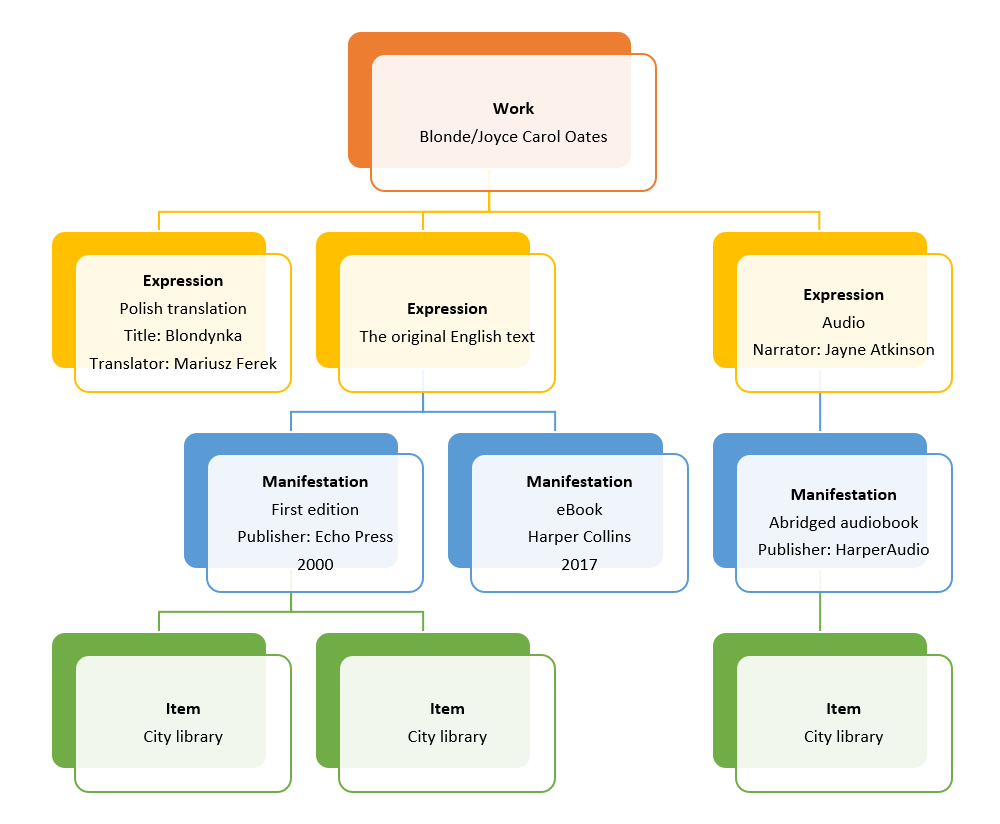Conceptual model - Collections
The vocabulary in Quria is based on
This means that we do not use the terms Catalogue records or Catalogue in Quria. The terms used are Metadata and Collections.
Quria’s presentation of the collections also follow the entities of the
Works, expressions and manifestations
Works, expressions, manifestations and items are different levels of bibliographical information.
A work can have several expressions, an expression several manifestations, and a manifestation several items. Information connected to the upper levels are inherited by the lower levels.
The different levels are displayed in the example below:

Work
The work is the most abstract level; the intellectual or artistic creation. Since the work is abstract, there is no individual material object that can be said to be the work.
Metadata/bibliographical information, for example Creator, Work title (original title), Subject and Classification belongs to the work.
Please note that the work title should always be the title in the language in which the work was created.
It may be good to know that adaptation from one literary or artistic form to another (such as dramatisation of a novel or adaptation of a novel to a movie) is to be considered as a new work and not as an expression.
Expression
The expression is the intellectual or artistic form that the work gets each time it is realised. The expression is also abstract, and there is no individual material object that can be said to be the expression.
The form represents a significant part of what distinguishes the expression. Because of this, every alteration of the form (for example from text to speech) results in a new expression. In Quria, we use the concepts Read it, Listen to it, View it and Touch it as different forms of expressions.
Alteration in language (for example translation from one language to another) similarly results in new expressions.
Translation from one language to another, musical arrangements, different dubbing or subtitled versions of a movie are, according to
It may be good to know that contributors that are of importance of the expression, such as translators or narrators, belong to the expression and are to be entered on this level.
Manifestation
A manifestation is the physical embodiment of an expression.
Manifestation types are used in Quria to describe the physical form of the manifestation.
See also: Manifestation type
Each edition of a title is a specific manifestation. This means that all information related to the specific manifestation, such as publication information, year,
Note that subtitles and series information also belong to the manifestation.
Item
The item is the individual representation of a manifestation, that is, the physical object.
Information about location, loan status, item type and item number belongs to the item.




